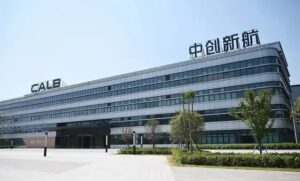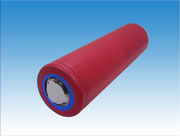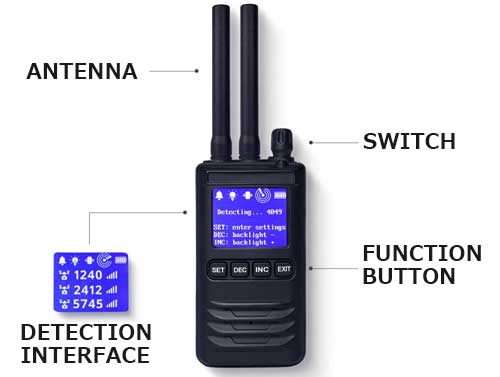CALB (China Aviation Lithium Battery Technology) Company Limited Detailed Research Report ,Applications by Sector,Comparison with Major Competitors

Applications by Sector
CALB’s batteries are used in a wide range of applications, chiefly electric vehicles (EVs) – including battery electric (BEV), hybrid (HEV/PHEV), and commercial vehicles – as well as stationary energy storage systems (ESS).
In the EV sector, CALB has achieved broad adoption among Chinese automakers. By the end of 2024, over 2 million vehicles in China were cumulatively equipped with CALB batteries, with total delivered battery volume exceeding 100 GWhacnnewswire.com.
During 2024 alone, CALB’s battery solutions were integrated into 25 new vehicle modelsacnnewswire.com.
Major customers include GAC Aion, which has been CALB’s largest client (accounting for nearly 30% of revenue in 2023)chinaventure.com.cn, as well as leading EV startups and OEMs like Xpeng, Nio, Li Auto, Leapmotor, and established state-owned automakers such as Changan and Geelybatterytechonline.com.
For instance, CALB became Xpeng’s largest battery supplier in 2023, supplying the Xpeng G6 SUV launched that yearcnevpost.com. CALB’s LFP packs (OS platform) power GAC Aion’s flagship Hyper GT sedanfinance.sina.cn.
The company has also expanded into the commercial EV segment: it supplies batteries for electric buses, trucks, and vans.
Customers in this segment include Dongfeng (trucks), Foton (commercial trucks), Chery Commercial Vehicles, King Long (buses), etc., and CALB’s installations in commercial vehicles grew 85% YoY in 2024 (with new commercial EV model launches up 150%)acnnewswire.com.
The energy storage segment is a high-growth area for CALB. Its batteries are used in large-scale renewable energy storage, industrial and commercial storage, and residential backup systems. In 2024, CALB’s ESS cell shipments exceeded 5 GWh in a single month, reflecting the rapid uptake of stationary storage solutionsacnnewswire.com.
According to InfoLink data, CALB was ranked 5th globally in energy storage battery shipments in 2024acnnewswire.com.
A notable partnership is with Sungrow, a leading Chinese PV inverter and energy storage integrator: CALB is the exclusive cell supplier for Sungrow’s 7.8 GWh storage project in Saudi Arabia and a 4.4 GWh project in Europe, totaling 12.2 GWh of ESS ordersess-news.com.
These projects underscore CALB’s growing presence in utility-scale storage deployments.
The company’s high-capacity 314 Ah cells have passed key certifications and are being rolled out in large battery packs for grid storageacnnewswire.com.
Other applications: While EV and ESS dominate, CALB’s batteries can also serve industrial equipment and consumer sectors. It has battery modules suitable for electric two-wheelers, forklifts, and has explored household energy storage solutions in collaboration with partnersfinance.sina.cn.
CALB’s focus is primarily on high-volume segments, so small consumer electronics cells are not a core business (unlike some competitors); instead, the company leverages its high-energy, long-life cell technology for mobility and renewable energy infrastructure.
Looking globally, CALB is making inroads into international markets. Overseas installations doubled in 2024 (up 105% YoY)acnnewswire.com, and the company has begun securing contracts with foreign automakers.
CALB has won nomination as a supplier for international brands like Toyota, Honda, Volkswagen, and Audiacnnewswire.com – a significant achievement indicating these OEMs are considering CALB batteries for future models. These likely pertain to collaborations via joint ventures in China or direct supply for global EV programs.
In the hybrid vehicle field, CALB started working with Geely and Leapmotor on new hybrid car projects and successfully supplied batteries for multiple hybrid models of Chery, Dongfeng, and BAIC in 2024acnnewswire.com.
All these efforts point to CALB’s ambition to transition from a domestic supplier to a global player in the EV battery industry, expanding its customer base across Europe and Asia.
Comparison with Major Competitors
In the global EV battery market, CALB faces intense competition from industry giants like CATL and BYD in China and LG Energy Solution in South Korea. The table below compares CALB with some of its top competitors in key aspects:
| Company | Global Market Share (2024) | Main Battery Types | Notable Strengths |
|---|---|---|---|
| CATL (China) | ~37.9% (No.1)cnevpost.com | LFP, NCM/NCA (pouch & prismatic); Kirin CTP packs | Largest production capacity, broad OEM portfolio, technology leadercnevpost.comcnevpost.com |
| BYD (China) | ~17.2% (No.2)cnevpost.com | LFP (Blade), NCM (prismatic) | Vertically integrated EV maker, cost advantage, huge domestic EV demandcnevpost.com |
| LG Energy Solution (Korea) | ~10.8% (No.3)cnevpost.com | NCM, NCMA, NCA (pouch & cylindrical) | High-nickel chemistry expertise, diversified global production (Asia, Europe, US) |
| CALB (China) | ~4.4% (No.4 globally)cnevpost.com (~8.5% in Chinachinaventure.com.cn) | LFP, NCM; developing Na-ion & semi-solid | Fast-growing challenger with innovative pack designs (OS) and cells (U-type); aggressive pricing strategychinaventure.com.cn |
Market share source: SNE Research global EV battery installation data (Jan-Dec 2024)cnevpost.com.
CATL and BYD together control over half of the world’s EV battery market, whereas CALB holds a single-digit share. CATL, the industry leader, benefits from unparalleled scale and supplies almost every major EV OEM (Tesla, BMW, VW, etc.), offering both high-performance NCM cells and low-cost LFP cellscnevpost.comcnevpost.com.
BYD, tied closely to its own EV sales, leverages its safe Blade LFP batteries and integrated supply chain to achieve low costs. LG Energy Solution leads outside China, focusing on advanced high-energy chemistries and maintaining strong relationships with US, European, and Korean automakers.
In comparison, CALB’s competitive edge has historically been its aggressive pricing and willingness to customize for clients.
It earned a reputation as a “dark horse” by undercutting larger rivals’ prices to win contractschinaventure.com.cn.
For instance, in 2021, CALB’s average battery selling price was reportedly lower than both CATL and even smaller peers like Farasischinaventure.com.cn.
This strategy boosted its market share – CALB’s global share grew from ~3.6% in 2022 to 4.7% in 2023chinaventure.com.cn – but came at the cost of profit margins.
Facing the price war in 2023, CALB saw revenue rising 21% while its battery installation volume jumped 81%chinaventure.com.cn, implying a steep drop in per-kWh price.
To avoid being stuck in a low-margin position, CALB is now doubling down on technology differentiation and scale. Its OS platform and U-type cells are examples of delivering higher performance to justify its products’ valuefinance.sina.cnbatterytechonline.com. Additionally, CALB’s substantial patent holdings (nearly 3,800 patents)sohu.com provide both defensive protection and an indication of its innovation capacitybatterytechonline.com.
It aims to climb to global top-3 by 2027batterytechonline.com by rapidly expanding capacity and winning overseas clients.
As a mid-tier player, CALB also enjoys a unique position: it is large enough to be considered a bankable supplier by automakers, yet smaller than the giants, which can make it a flexible partner. Its challenge will be closing the scale gap with CATL and BYD without eroding profitability, and continuing to invest in R&D to compete with the technical prowess of larger rivals.






